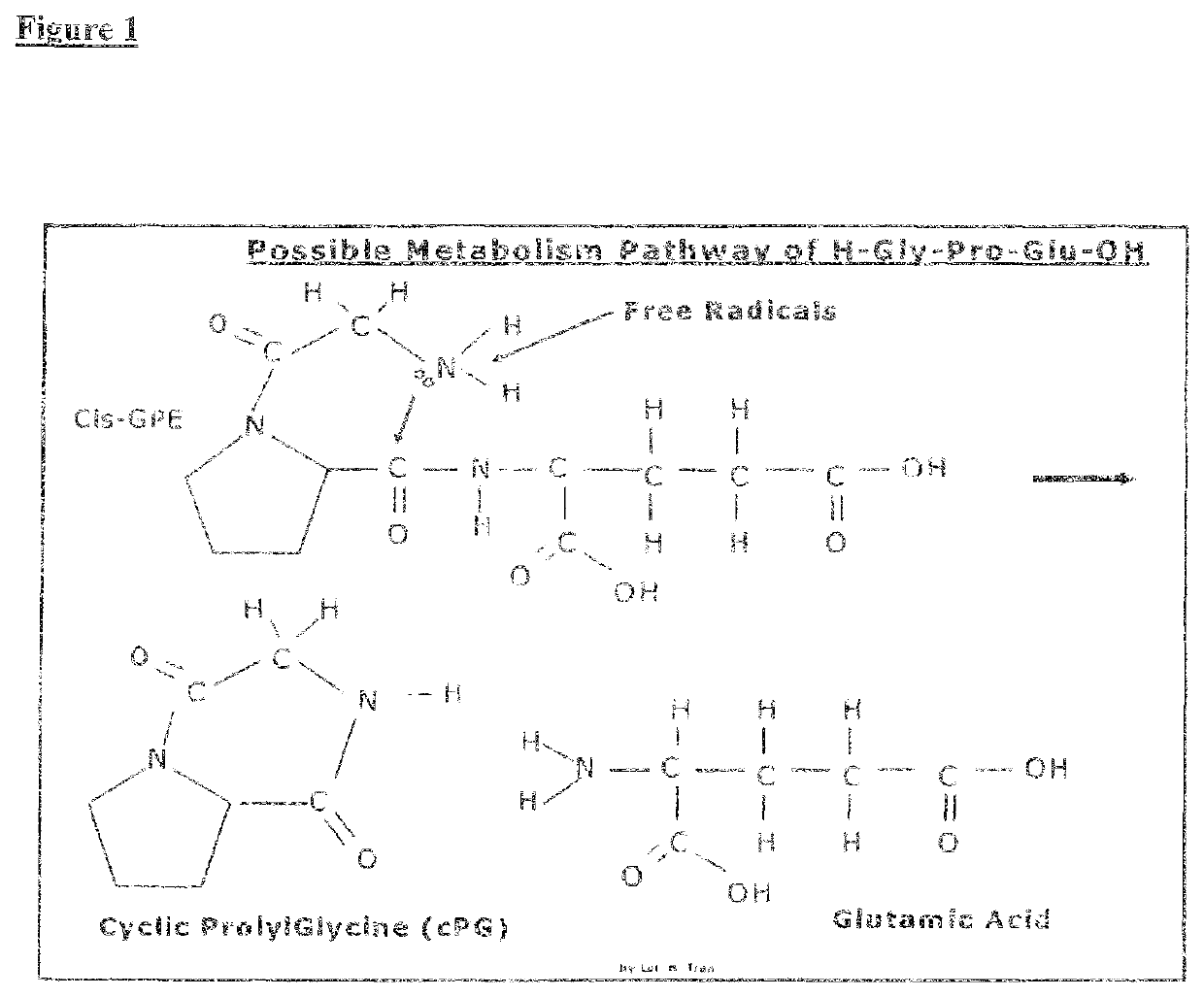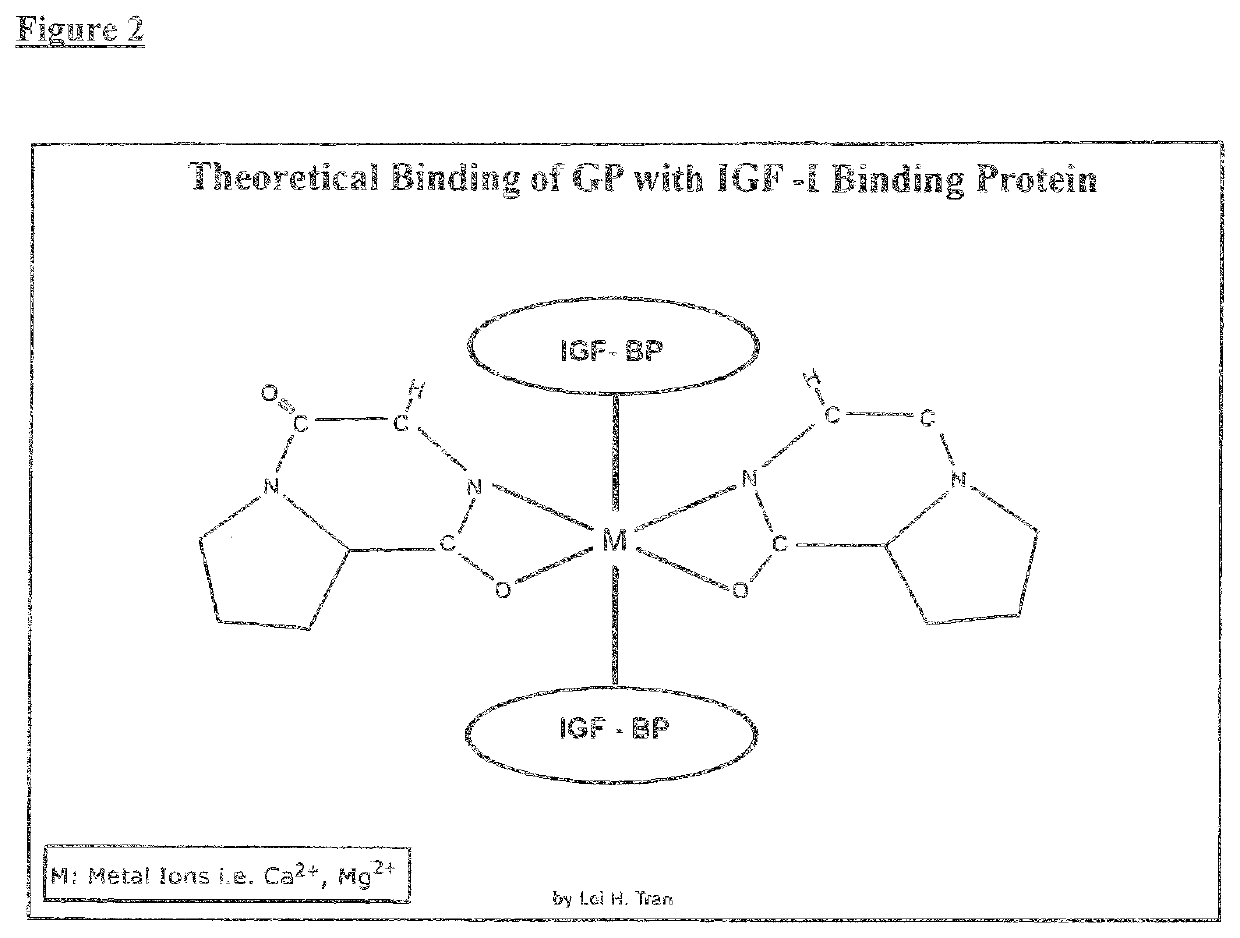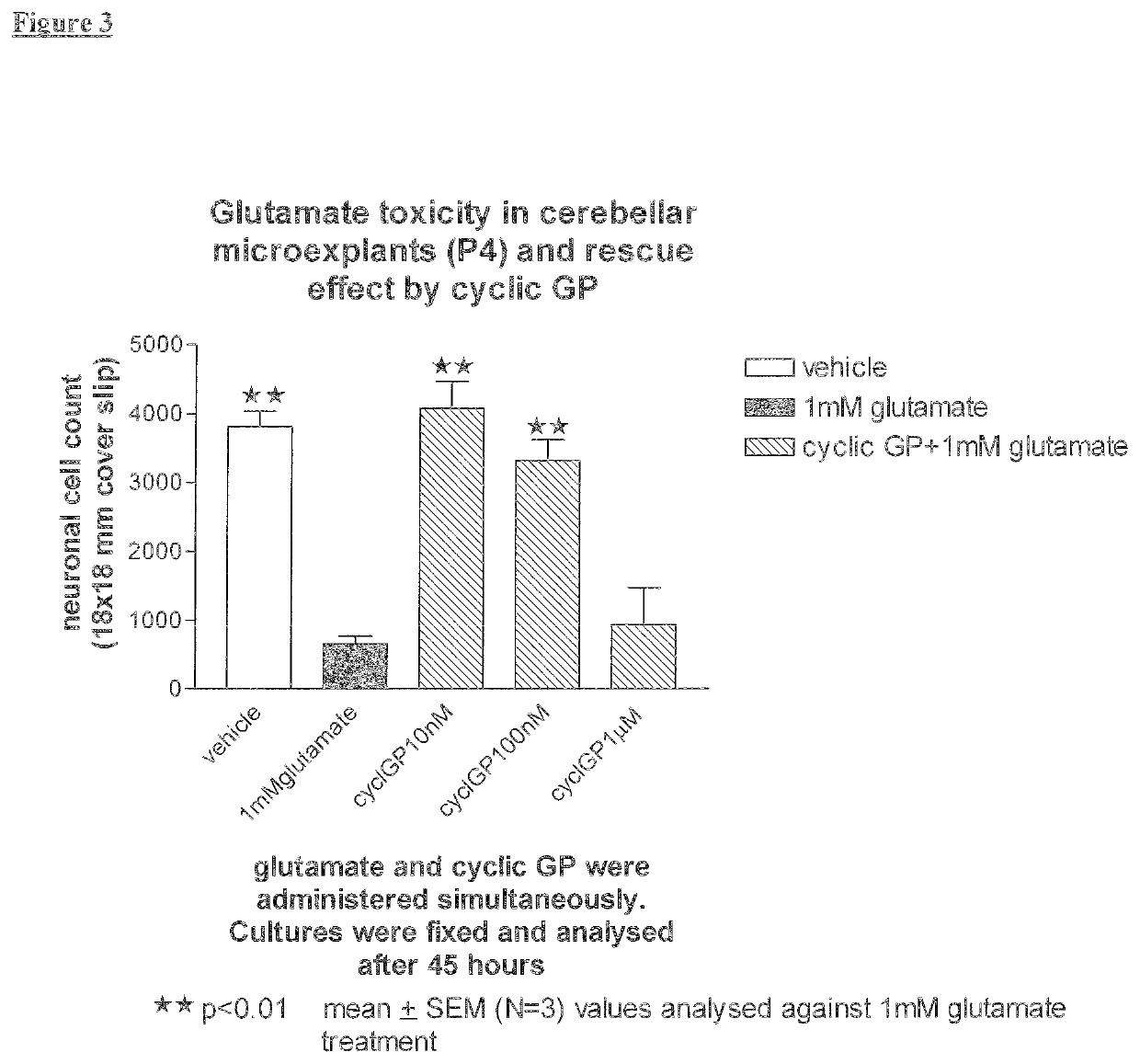Therapeutic agent composition and method of use, for treatment of mild congnitive impairment, depression, and psychological disorders
a technology of therapeutic agents and compositions, applied in the field of new drugs, can solve the problems of significant impairment in daily life, unfavorable side effects, and high social and health care systems of developed and developing economies, and achieve the effects of improving the flow properties, preventing the formation of dies of sticking to the tablet, and improving the availability of medicaments
- Summary
- Abstract
- Description
- Claims
- Application Information
AI Technical Summary
Benefits of technology
Problems solved by technology
Method used
Image
Examples
examples
[0256]The following in vitro and in-vivo studies demonstrate efficacy of cyclic Prolyl Glycine in reducing cognitive impairment. They are not intended to be limiting, and other compositions and methods of this invention can be developed without undue experimentation. A II the following experiments were carried out using protocols developed under guidelines approved by the Animal Ethics Committee and Institutional Review Board.
[0257]Cyclic Prolyl Glycine is available from commercial suppliers such as Bachem (Torrance, Calif.), and Sigma (St. Louis, Mo.),
experiment 1
[0258]Cyclic PG Prevents Glutamate Induced Neuronal Death In Vitro in a Dose Related Manner.
Materials and Methods:
Cerebellar Cell Culture Preparing and Coating of Cover Slips
[0259]Ten coverslips were placed into a large petri dish and washed in 70% alcohol for 5 minutes, then washed with Millipore H2O. The coverslips were air dried, then coated with Poly-D-Lysine (1 mg / ml stock solution in PBS, 90-100 μl) and incubated for 2 hours at 34° C.
Extraction
[0260]Postnatal day 4 Wistar rats were used for the study. Rats were placed in ice for 1 minute, the heads were decapitated and the cerebellum removed on ice. Cerebellum tissue was placed in 1 ml of 0.65% glucose supplemented PBS (10 μl 65% stock D (+)glucose / 1 ml PBS) in a large petri dish, chopped up into smaller sections and triturate with a 1 ml insulin syringe via a 23 G (0.4 mm) needle, and then squirted back into the glucose solution on the large petri dish. The tissue was sieved through (125 μm pore size gaze) and centrifuged (2 ...
experiment 2
[0267]Cyclic (Tri(Prolylglycyl)) or c(PG)3 Prevents Glutamate Induced Neuronal Death In Vitro in a Dose Related Manner.
Materials and Methods: (See Above for Experiment 1, which is Incorporated by Reference Herein.)
Drug Application
[0268]10 μl of toxin (L-glutamate-100 mM in Millipore water) was applied simultaneously with cyclic(tri(prolylglycyl)) (which was obtained from NeuroBiomed, San Jose, Calif.), 10 mM stock prepared in PBS and diluted to final concentrations between 1-100 nM) for Study 1. A delay in administration of cyclic(tri(prolylglycyl)) at 6 hours after glutamate treatment was performed for Study 2.
Result:
[0269]Study 1: Glutamate treatment resulted in 85% loss of cerebellum neurons. cyclic(tri(prolylglycyl)) significantly reduced the glutamate induced neuronal death by 57% in a dose response manner when administered simultaneously with glutamate. The treatments with lower doses of cyclic(tri(prolylglycyl)) (10-100 nM) showed significant recovery from glutamate-induced n...
PUM
| Property | Measurement | Unit |
|---|---|---|
| weight | aaaaa | aaaaa |
| body weight | aaaaa | aaaaa |
| body weight | aaaaa | aaaaa |
Abstract
Description
Claims
Application Information
 Login to View More
Login to View More - R&D
- Intellectual Property
- Life Sciences
- Materials
- Tech Scout
- Unparalleled Data Quality
- Higher Quality Content
- 60% Fewer Hallucinations
Browse by: Latest US Patents, China's latest patents, Technical Efficacy Thesaurus, Application Domain, Technology Topic, Popular Technical Reports.
© 2025 PatSnap. All rights reserved.Legal|Privacy policy|Modern Slavery Act Transparency Statement|Sitemap|About US| Contact US: help@patsnap.com



